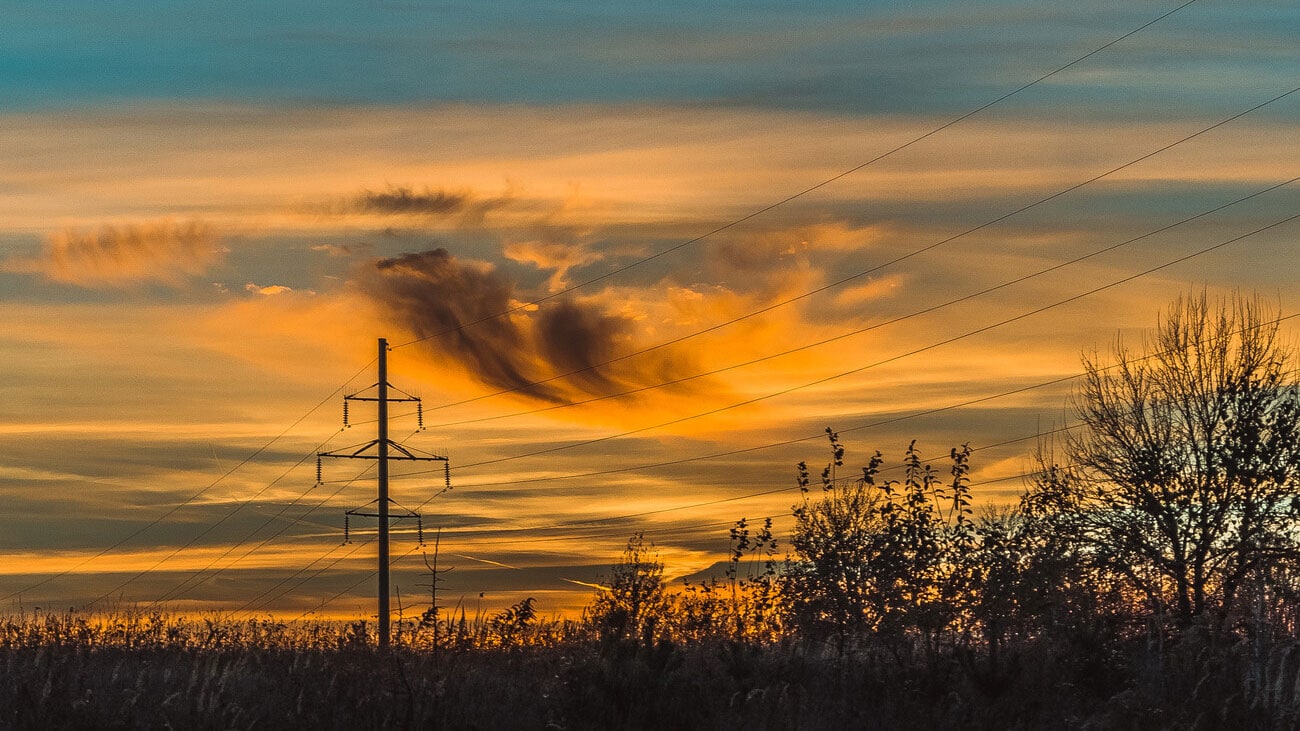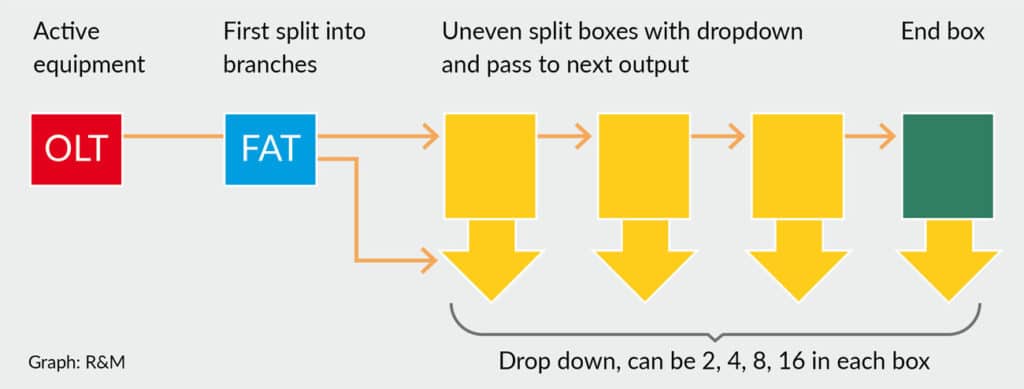Aerial Deployment: Not Limitless

Where network operators have to be careful
In rural areas, Fiber to the Home (FTTH) can be realized at low cost with aerial deployment and passive distribution technology. The ideal scenario would be to serve as many subscribers as possible over as long a distance as possible with as few cables as possible.
Splitters branch off the signals for the individual customers. But this is exactly where network operators have to be careful.
There are physical barriers to a serial application: The power budget of the signal is used asymmetrically and the signal drops exponentially the further it moves along the series of splits.
The split ratio is all important
To distribute the power budget more evenly, experts recommend an uneven division of the signal. The larger part continues and a small part is used for the dropdown.
Here we are looking at split ratios of 10/90, 30/70, etc. This helps to attenuate the uneven distribution a little. To compensate for the following splits, a different split ratio would have to be selected for each split box.
This means that every split box has to be designed carefully. This enables network operators to reverse the effects of the sequential signal split. They are able to distribute the available performance evenly among the customers.
Incidentally: R&M supports network operators in the planning and configuration of individual split boxes.
The number of splits remains limited
Not even we can undermine the laws of physics. The power budget drops with every splitter. The loss is about 1 dB – regardless of the split ratio.
If four split boxes were to be cascaded, at least 60 % of the output power would be lost. This means the number of split boxes per backbone is limited.

Decision time: active or passive solution
The passive, serial architecture described above could be implemented simply and at low cost but network operators should nevertheless carefully consider whether to use the passive solution or active systems. In some cases, it will be necessary to use active technology.
Ultimately, FTTH subscribers in rural areas expect the same transmission performance as customers in urban areas.

